Main Image: © Dean Drobot via Canva.com
Ingrown hairs are an unfortunate side effect of shaving, especially for redheads with super sensitive skin. Not only are ingrown hairs unsightly, they can be uncomfortable and even at risk of infection if not treated properly. The steps you take while shaving can greatly reduce your risk of ingrown hairs and help you avoid them altogether.
1. Exfoliate often
Ingrown hairs occur because the hair is pushed back under the follicle, or because the follicle is blocked by dead skin or other pore-clogging elements. Exfoliating regularly will help to reduce blocked follicles, thus reducing your risk of ingrown hairs.
Generally, most people can exfoliate 1-3 times a week. However, those with sensitive or dry skin should exfoliate less frequently, while people with oily or acne-prone skin may benefit from more frequent exfoliation. It’s essential to pay attention to your skin’s response and adjust your exfoliation routine accordingly. Consulting with a dermatologist can provide personalized guidance for your specific needs.
2. Use proper shaving creams or oils
Using a shaving cream or shaving oil can help reduce shaving irritation, including ingrown hairs. Soap and body wash can feel like a good option, but often will not give you the proper barrier between razor and skin.
Selecting the right shaving cream or shaving oil for your skin involves considering your skin type, any specific concerns, and personal preferences. Here are some steps to help you choose:
1. Know Your Skin Type: Determine whether you have sensitive, dry, oily, or combination skin. This will influence the type of product that’s best for you.
2. Consider Skin Sensitivity: If you have sensitive skin, look for shaving creams or oils labeled as hypoallergenic or formulated for sensitive skin. These products typically contain fewer potential irritants.
3. Moisturizing Properties: For dry skin, opt for shaving creams or oils that are hydrating and moisturizing. Ingredients like aloe vera or shea butter can be beneficial.
4. Acne-Prone Skin: If you have acne-prone skin, avoid products with heavy fragrances or comedogenic ingredients. Non-comedogenic (won’t clog pores) options are preferable.
5. Ingredients: Check the ingredient list. Look for products with natural ingredients and avoid those with alcohol or harsh chemicals that can dry out or irritate the skin.
6. Shaving Method: Consider your preferred shaving method. Shaving cream works well with razors, while shaving oil is often used for wet shaving with a safety razor or straight razor.
7. Fragrance: Choose a scent you enjoy, but be cautious if you have sensitive skin as fragrances can sometimes cause irritation.
8. Trial and Error: It may take some experimentation to find the right product for your skin. Consider trying a few different options to see which one works best for you.
9. Patch Test: Before applying any new product to your entire face, do a patch test on a small area of skin to check for any adverse reactions.
10. Consult a Dermatologist: If you have specific skin concerns or conditions, it’s a good idea to consult with a dermatologist. They can recommend products tailored to your skin’s needs.
Remember that personal preference plays a significant role in choosing the right shaving product. What works for one person may not work for another, so don’t be afraid to experiment until you find the product that provides the best shaving experience for your skin.
3. Shave with the hair, not against it
Shaving against the grain of your hair can often make your skin feel smoother immediately post-shave, but it actually cuts the hair at a sharper angle. This means it will feel pricklier when it grows back, and also leaves you at a higher risk of ingrown hairs.
Shaving with the direction of hair growth, known as shaving “with the grain,” is advisable for several reasons. It reduces the risk of skin irritation, razor burn, and ingrown hairs, as well as minimizes the occurrence of razor bumps, making it a gentler choice for the skin, especially for those with sensitive skin. However, it’s important to note that the direction of hair growth varies among individuals and body areas. Experimentation may be needed to determine the most suitable shaving technique for different parts of the body to achieve a comfortable and effective shave.
4. Use a sharp blade
Dull blades are another cause of ingrown hairs. Make sure you change your razor blade often and use a high-quality razor when shaving.
The frequency at which you should change your razor blade depends on several factors, including the type of razor, how often you shave, and the coarseness of your hair. As a general guideline:
1. Disposable Razors: If you’re using disposable razors, they are typically designed for a limited number of uses. You might get around 5-10 shaves from one disposable razor before it starts to become dull. However, this can vary based on factors like hair thickness and the quality of the razor.
2. Cartridge Razors: Cartridge razors, which have replaceable blade cartridges, can last longer than disposable razors. You might replace the cartridge every 2-4 weeks, depending on your shaving frequency.
3. Safety Razors: Safety razors have a single, replaceable blade. These blades can last longer, often several weeks to a month or more, but it depends on how frequently you shave and how well you maintain the blade’s sharpness.
4. Straight Razors: Straight razor blades can last even longer, often months or more. However, they require regular honing and stropping to maintain their sharpness.
It’s essential to pay attention to the signs that your razor blade is dull, such as tugging at the hair, increased skin irritation, or a less smooth shave. When you notice these signs, it’s time to replace the blade. Additionally, rinsing and drying your razor thoroughly after each use can help prolong the blade’s life.
Ultimately, the key is to replace the blade when you no longer achieve a comfortable and effective shave rather than strictly adhering to a specific timeline.
5. Use a proper post-shave treatment
Keeping your skin hydrated and your pores free of clogging agents is important for reducing your risk of ingrown hairs post-shave.
A good post-shave treatment is essential for soothing the skin, minimizing irritation, and promoting overall skin health. Options include aftershave balms, which contain ingredients like aloe vera and chamomile to soothe and moisturize; aftershave lotions for replenishing hydration and providing a refreshing sensation; and aftershave splashes with antiseptic properties to disinfect minor nicks. Aftershave serums offer lightweight hydration, while natural oils like jojoba or argan oil can nourish the skin. Fragrance-free options are best for sensitive skin, and don’t forget to consider SPF moisturizers for daytime use. Ultimately, the choice depends on your skin type and preferences, ensuring a comfortable and irritation-free post-shave experience.
6. Skip the shave
If you’ve tried all these tips and are still struggling with ingrown hairs, you might want to try an alternative to shaving. Unfortunately waxing and plucking can also lead to ingrown hairs, but a hair removal cream or laser could be a good option for you.
If you’re a redhead man struggling with shaving, it may be best to invest in a good buzzer and throw away the razor all together.
Rock it like a Redhead!
RELATED POSTS
READ: 6 Reasons Your Redhead Skin is Irritated After Shaving
READ: Hair Removal 101 for Redheads: Find Your Perfect Fit With These 5 Common Methods



